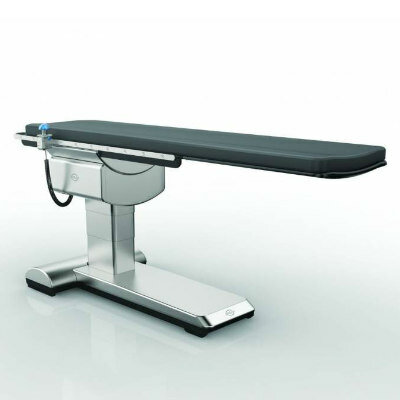Time Resolved, Multiframe Acquisition MRI Technique Identifies Early-Stage Heart Disease
By MedImaging International staff writers
Posted on 16 Oct 2012
Researchers reported they are nearer to finding a magnetic resonance imaging (MRI) technique that can identify coronary artery wall thickening, an early indicator of coronary heart disease (CAD). Posted on 16 Oct 2012
The study’s findings were published online October 2012 in the journal Radiology. “Imaging the coronary arteries that supply the heart with blood is extremely difficult because they are very small and constantly in motion,” said lead researcher Khaled Z. Abd-Elmoniem, PhD, staff scientist in the Biomedical and Metabolic Imaging branch of the US National Institutes of Health’s (NIH) National Institute of Diabetes and Digestive and Kidney Diseases (Bethesda, MD, USA). “Obtaining a reliable and accurate image of these vessels is very important because thickening of the vessel wall is an early indicator of atherosclerosis.”
CAD occurs when cholesterol and lipid deposits (plaques) accumulate inside coronary arteries, a process called atherosclerosis, which increases the risk of a myocardial infarction and other coronary events. By detecting the vessel wall thickening that precedes artery narrowing, early intervention is possible. “We currently have no reliable way to noninvasively image coronary artery disease in its early stages, when the disease can be treated with lifestyle changes and medications to lower cholesterol,” Dr. Abd-Elmoniem said.
The researchers employed MRI scanning to measure the wall thickness of the coronary arteries in 26 patients with at least one risk factor for CAD and 12 healthy control participants correlated to patients by body mass index (BMI). The mean age of the patients, which included 13 men and 13 women, was 48; healthy controls included three men and nine women (mean age 26).
To measure the coronary artery wall thickness in each of the study’s participants, the researchers used both a single-frame MRI scan and an MRI technique called time-resolved multiframe acquisition, in which five continuous images are captured to increase the success rate of obtaining an image free of blurring.
Using the time-resolved multiframe acquisition technique, the success rate for obtaining a usable image was 90% in comparison to a success rate of 76% for the single-frame technology. Utilization of the time-resolved multiframe technique also resulted in a greater ability to detect a considerable disparity between the wall thickness measurements of CAD patients and the healthy participants, as well as a smaller standard deviation (SD), which is indicative of more precise measurements. “These results suggest that MRI may be used in the future to screen for individuals at risk for coronary artery disease and may be useful for monitoring the effects of therapies,” Dr. Abd-Elmoniem said.
“Dr. Abd-Elmoniem is a bright and inventive scientist who first suggested this innovative approach to improving coronary wall imaging,” said Roderic Pettigrew, PhD, MD, director of the National Institute of Biomedical Imaging and Bioengineering (NIBIB) and senior collaborator of the study. “We are delighted that the technique is showing such practical promise.”
Dr. Abd-Elmoniem reported that in contrast to blood tests that measure cholesterol and lipids in the blood, which can be indicators of atherosclerosis, the thickness of coronary artery walls is a direct measurement of early-stage CAD. He noted that additional studies are needed to corroborate the time-resolved multiframe MRI technique findings.
Related Links:
US National Institute of Diabetes and Digestive and Kidney Diseases














